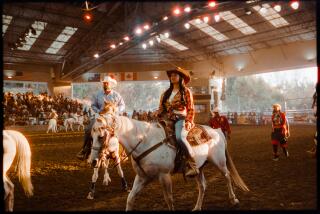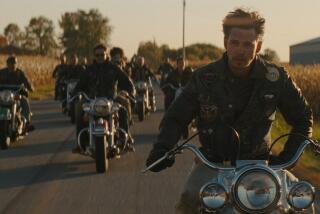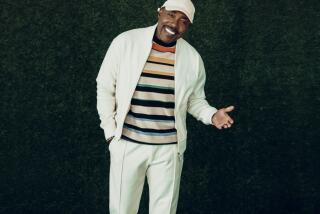A MAVERICK’S VIOLENT LEGACY
- Share via
Sam Peckinpah, who died over the weekend of cardiac arrest at the age of 59, was one of those mavericks who helps the motion picture business keep renewing and extending itself, but with whom the business never knows how to cope.
The consequence is a chronicle of frustrations, battles, films finished or eviscerated by lesser hands, films never made at all, the film maker’s vision glimpsed in pieces like an unassembled mosaic.
But when the verdicts of time are in, it turns out that the true mavericks--from Griffith to Keaton to Ford to Welles to Coppola and Peckinpah via a short list of their peers--enlarged and shaped the history of the movies, and did it despite the committees and the accountants.
Peckinpah’s recurrent theme was violence, and what has become ever clearer with the passage of time is that he was commenting on violence and not simply exploiting it (as the movies had been doing from their beginning, and continue to do).
The best account of Peckinpah’s working life is Garner Simmons’ “Peckinpah: A Portrait in Montage” (U. of Texas Press, 1982), and Peckinpah summed up his feelings to Simmons: “Man is violent by nature and we have to live with it and control it if we hope to survive.”
It was a primitive view of man as primitive, even in contemporary circumstances (as with the professorial Dustin Hoffman taking his revenge in “Straw Dogs”). It is an unlovely view, and Peckinpah’s “The Wild Bunch” in 1969 was the most graphically violent and disturbing mainstream film that had then come out of Hollywood. Blood spurted from a fresh-cut throat.
“Bonnie and Clyde,” released two years earlier in 1967, had had its own ballet of violence. It was also more complicated in its points of view, exploring the economic origins of violence. As critics noted, the Arthur Penn film for once took the view that violence hurts and that killing kills. After the years of ceremonial violence, used as a substitute for sexuality, in American films, that shift in view was startling.
What Peckinpah added was not simply that man was violent by nature but that man was capable of taking pleasure in violence--and not only aberrant, freaky man. The math professor with glasses was discovering he was in a real sense an outrider to the wild bunch.
The feelings about violence were linked to other Peckinpah attitudes, toward group loyalties and self-reliance, the rituals of a frontier past. He was of an old California family, the grandson, son and brother of judges. There’s a Peckinpah Mountain in the state.
What is easy to forget is that Peckinpah, after graduating from Fresno State, worked toward a master’s in theater arts at USC and spent two seasons as a director-in-residence at the Huntington Park Civic Theater, staging everything from “Our Town” to “South Pacific” and conducting workshops on Ibsen and Moliere.
He sometimes encouraged the impression that he had just rolled off a dusty freight car from Albuquerque, but he’d gone back and finished his master’s degree at USC and made a long climb up television from stagehand at a local station to writing “Gunsmoke” episodes and then, at last, directing. By every account, he was a first-rate writer and film editor.
I’ve often wondered if his professionalism as a director of action, with his feelings about violence and his fairly simplistic attitudes toward women, had not become a kind of typecasting entrapment for him, reinforced by his free-swinging and public life style.
His consumptions had been heroic and by the time a heart attack and the installation of a pacemaker in 1979 forced him to ease off, I suspect the damage was done.
There was another side of him. When he came to KCET to do a live television interview about “The Wild Bunch” in 1970, he brought a half-pint of Southern Comfort to calm his nerves. As it was, he spoke in a polite, hard-to-hear whisper, the wrath of the boardrooms intimidated by the camera’s winking red light.
Shooting “The Osterman Weekend” in Mandeville Canyon two years ago, he was a hired gun, taking pride in solving some monumental technical problems (shooting footage to be seen on monitors that were part of the story). Technically and spiritually it was not a Peckinpah picture. In the end, it was not even his final cut and you were left with a baffling story and some sequences that were manifestly the work of an old master.
As with all the mavericks of genius, you tend to feel there was one more title to go in the filmography, one last triumphant work that would be a fine, concluding symmetry for the early promise--in Peckinpah’s case, the promise of “Ride the High Country.”
What Peckinpah did make has a power that the years are not likely to erode. It is just that there should have been one more that was a march to glory and not an ambush in a box canyon. But there seldom is, and there wasn’t for Sam.
More to Read
The biggest entertainment stories
Get our big stories about Hollywood, film, television, music, arts, culture and more right in your inbox as soon as they publish.
You may occasionally receive promotional content from the Los Angeles Times.










